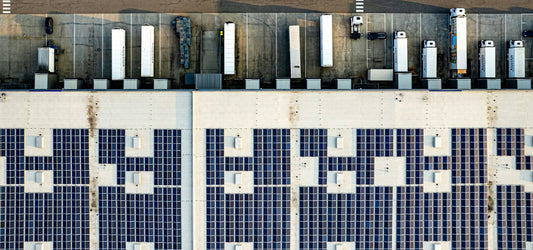A solar-powered RV or camping setup allows you to enjoy the freedom and independence of off-grid living while reducing your carbon footprint. By harnessing the power of the sun, you can keep your devices charged and enjoy modern comforts without relying on noisy generators or connecting to shore power. In this step-by-step guide, we'll show you how to build a solar-powered RV or camping setup from scratch, with a focus on the components and equipment required.
Step 1: Determine Your Power Needs
Before you can start building your solar setup, you need to figure out how much power you'll need. Make a list of all the devices and appliances you plan to use, such as lights, phones, laptops, refrigerators, and fans. Calculate the total wattage required to run these devices and estimate how many hours per day you'll use each one. This information will help you determine the size and capacity of your solar system.
Step 2: Choose the Right Solar Panels
Selecting the right solar panels is crucial for your solar-powered RV or camping setup. There are different types of solar panels, such as monocrystalline, polycrystalline, and thin-film. Monocrystalline panels are generally more efficient but also more expensive, while polycrystalline panels are less efficient but more affordable. Thin-film panels are lightweight and flexible, making them ideal for portable applications. Consider your budget, available space, and power needs when choosing the right solar panels for your setup.
Step 3: Select a Solar Charge Controller
A solar charge controller is an essential component that regulates the voltage and current coming from your solar panels for home, preventing overcharging and extending the life of your batteries. There are two main types of solar charge controllers: PWM (Pulse Width Modulation) and MPPT (Maximum Power Point Tracking). MPPT controllers are more efficient and can extract more power from your solar panels, but they're also more expensive. Consider your system's size and your budget when selecting a solar charge controller.
Step 4: Pick the Right Batteries
Choosing the right batteries is crucial for storing the energy generated by your home solar panels. Deep-cycle batteries, such as AGM (Absorbent Glass Mat) and lithium-ion, are popular choices for solar-powered RVs and camping setups. LiFePO4 (Lithium Iron Phosphate) batteries are gaining popularity due to their long lifespan, high energy density, and excellent thermal stability. Make sure to select a battery with sufficient capacity to meet your power needs and consider factors such as weight, size, and maintenance requirements.
Step 5: Purchase an Inverter
An inverter is necessary to convert the DC power generated by your solar panels into AC power that can be used by most appliances and devices. There are two main types of inverters: modified sine wave and pure sine wave. Pure sine wave inverters provide cleaner power, making them ideal for sensitive electronics, but they're also more expensive. Choose an inverter with a wattage rating that matches your power needs and consider factors such as efficiency, size, and weight.
Step 6: Install Your Solar System
Now that you have all your components, it's time to install your solar system. For an RV, you'll need to mount the solar panels on the roof or create a portable ground-mounted setup. For a camping setup, you can use a portable solar off-grid system that can be easily set up and taken down.
Connect your solar panels to the solar charge controller using the appropriate cables, then connect the charge controller to your battery bank. Finally, connect your inverter to the battery bank and plug in your appliances. Make sure to follow all safety precautions and guidelines when installing your solar system.
Step 7: Test Your Solar Setup
Once your solar setup is installed, test it to ensure that it's working correctly. Monitor the power generated by your flexible solar panels, the charging process of your battery bank, and the performance of your inverter. Check for any loose connections, and make sure that your solar panels are receiving adequate sunlight for optimal performance. Keep an eye on the efficiency of your system and make any necessary adjustments to improve its performance.
Step 8: Maintain Your Solar Setup
Regular maintenance is essential to ensure the longevity and efficiency of your solar-powered RV or camping setup. Keep your solar panels clean and free of dirt and debris, as this can significantly reduce their efficiency. Check your battery bank regularly for signs of wear or damage and keep the terminals clean and tight. Inspect your inverter and solar charge controller for any issues, and address them promptly to maintain the performance of your system.
Step 9: Optimize Your Energy Consumption
To make the most of your solar-powered setup, it's essential to optimize your energy consumption. Invest in energy-efficient appliances and devices, and avoid using high-energy-consuming items during periods of low sunlight. Monitor your energy usage, and make adjustments as needed to ensure that you're not draining your battery bank too quickly.
Step 10: Enjoy Your Solar-Powered RV or Camping Setup
With your solar powered generator for RV or camping setup complete, you're now ready to enjoy the great outdoors without relying on fossil fuels or noisy generators. You'll save money on fuel costs, reduce your carbon footprint, and experience the freedom of off-grid living.
By following these steps, you can successfully build a solar-powered RV or camping setup from scratch. Visit RockSolar's RV & Van Collection for all your solar energy needs, and explore our wide range of solar panels, battery banks, inverters, and other essential components to create the perfect solar setup for your next adventure.
Related Posts:




